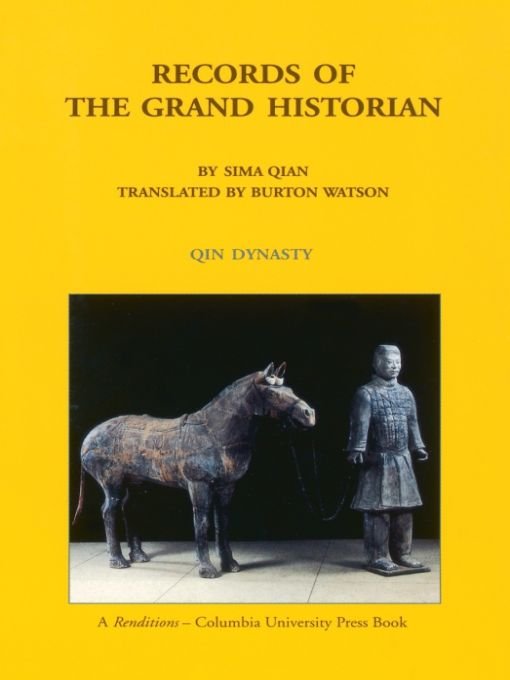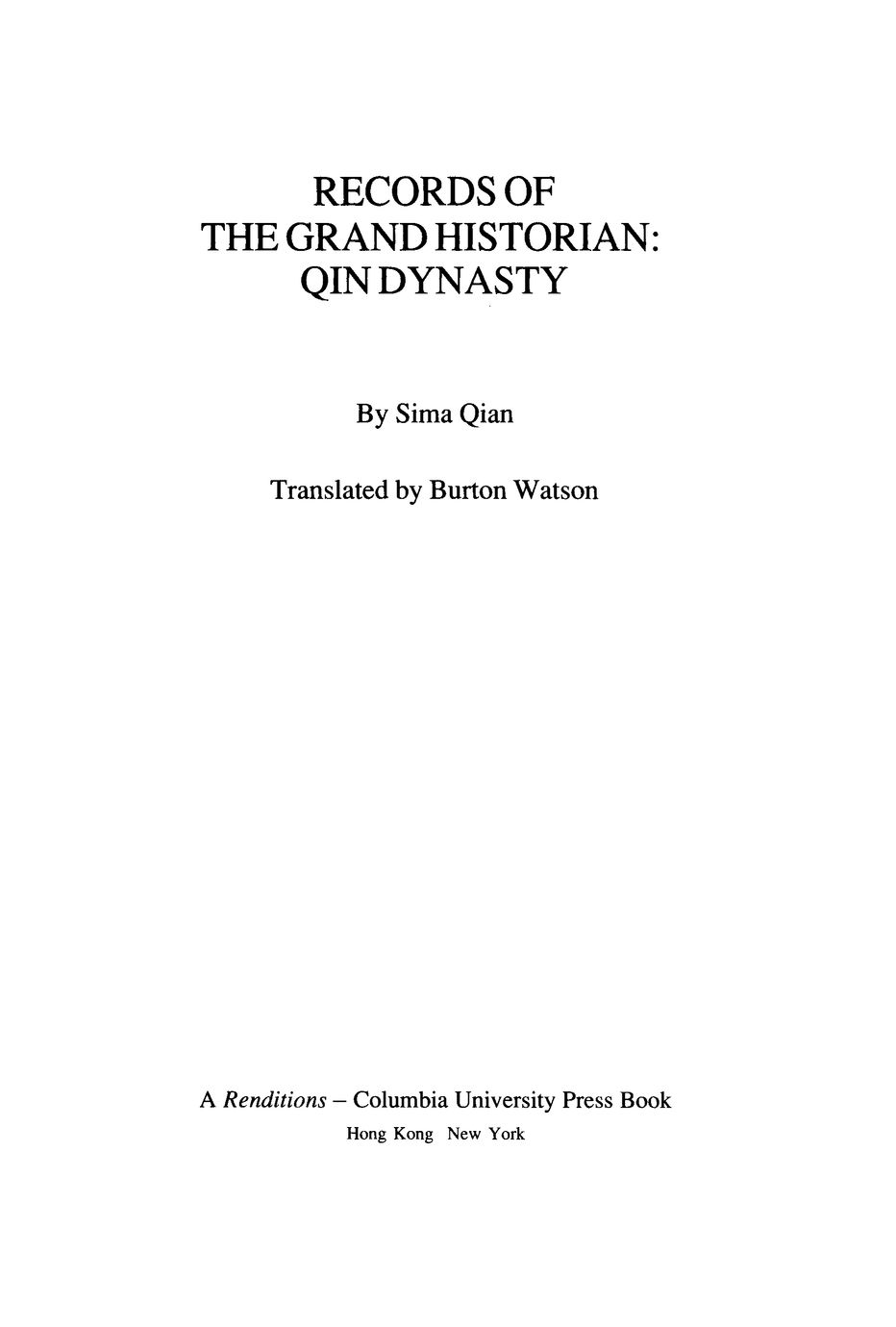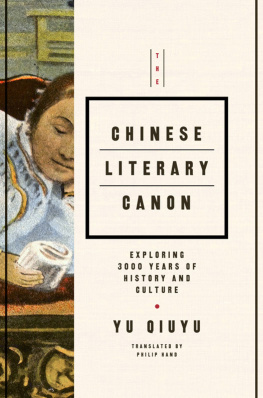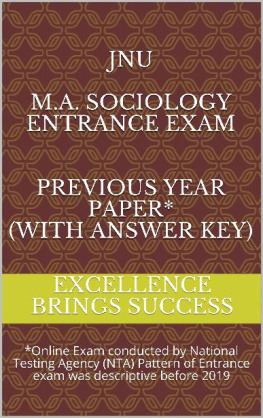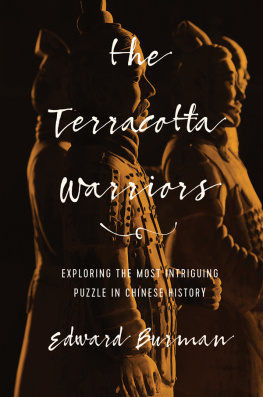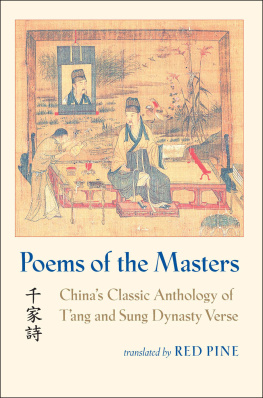Table of Contents
INTRODUCTION
The Chinese, with their veneration of ancestors and reverence for the rites and practices of the past, have from early times been indefatigable keepers of historical records. It is not surprising, therefore, that works of history should occupy a place of particular importance in their literature. The text from which the chapters translated here are drawn, the Shi ji, Records of the Grand Historian or Historical Records, as the title is sometimes translated is in fact one of the most widely read and influential of all works of early Chinese literature, and its author, Sima Qian (145?89? BC), commands among readers of Chinese a respect and admiration comparable to that accorded Herodotus or Thucydides in the Western tradition.
The Shi Ji was planned, and perhaps written in part, by Sima Qians father, Sima Tan (d. 110 BC), an official who held the title of Taishi, or Grand Historian, at the court of Emperor Wu of the Han dynasty but whose actual duties pertained more to astronomy and the regulation of the calendar. Sima Qian succeeded to his fathers post and title and, obedient to his fathers dying request, set about bringing the proposed work of history to completion. After some seven years of labor, however, his efforts were unexpectedly interrupted by a tragic turn of events.
China at this time was frequently troubled by raids from the Xiongnu, a nomadic people living in the desert north of China. Emperor Wu, determined to put an end to the incursions, repeatedly dispatched large military forces to the desert region in an attempt to capture the Xiongnu ruler, known by the title of Shanyu, or at least force him to acknowledge fealty to the Han. During one such expedition in 99 BC, a young military commander named Li Ling led a force of several thousand men in a daring raid deep into enemy territory, but after desperate fighting he was finally forced to surrender. Emperor Wu, who expected his military leaders to die in battle, was enraged when he learned of the surrender, and the other court officials united in condemnation of Lis action. Only Sima Qian, who had known and admired Li Ling in the past, spoke out in his defense. For such temerity he was charged with attempting to deceive the ruler and handed over to the law officials for investigation, a process that involved imprisonment and torture. Eventually he was sentenced to undergo the penalty of castration. Customarily, a man of honor would commit suicide before submitting to such disgrace. But, as Qian explains in a letter to a friend translated in appendix 2 of this volume, he chose to suffer the shame of mutilation in order that he might finish the writing of his history. This price of completion, ghastly as it was, has assured him a place of honor among the worlds great historians.
The Shi ji is monumental in scope and aim, running to 130 chapters and covering the entire known history of the Chinese people from its beginnings down to the time of the historian, a period of well over two thousand years. In addition, it includes chapters describing the lands and peoples of the areas of central Asia, Korea, and Vietnam that border China. It is thus in effect a history of the entire world as known to the Chinese of this early period.
To impose order on this vast array of material, Sima Qian devised an entirely new historiographical form. He divided his history into five large sections, arranging his material by subject and suggesting by the section in which he placed it something of its importance and relative reliability. His work opens with twelve chapters entitled benji, or Basic Annals, which deal with the early dynasties of Chinese history or, in the case of the Han dynasty, with the reigns of individual rulers. Next come ten Chronological Tables that list in graph form the important events of the past with their dates. These are followed by eight Treatises on such subjects as rites, music, astronomy, religious affairs, water control, and economics. Thirty chapters entitled Hereditary Houses come next, dealing for the most part with the histories of the various feudal states of ancient China. The work concludes with seventy chapters entitled liezhuan, Biographies or Accounts devoted to the lives of famous personages or to the foreign lands with which China had contact.
These five large divisions of the history support and supplement one another in various ways, the different chapters pertaining to a single event or personage often varying subtly in treatment and angle of approach. Thus, although there is a certain degree of cross-referencing, one must take care to read all pertinent sections of the work in order to gain a full picture of any given subject. This type of formal arrangement, known as the annal and biography form, was adopted in later dynastic histories compiled under official auspices, and it exercised a great influence on the development of Korean and Japanese historiography.
In two earlier volumes of translations from the Shi ji published in 1961 and reissued in slightly revised form in 1993, I presented material dealing with the founding and early years of the Han, the dynasty under which the historian lived and worked. In the present volume I have moved backward in time somewhat to focus on the chapters of Sima Qians work that relate to the preceding Qin, or Chin, dynasty, founded in 221 BC when the king of the state of Qin brought all of China under his rule and assumed the title of First Emperor of the Qin. The First Emperor, long regarded as one of the most influential and noteworthy of all Chinese rulers, has in recent years become the center of particular interest because of the spectacular life-size terracotta figures of Qin period warriors that were discovered in excavations near his mausoleum in 1974.
Sima Qian began his history with a chapter entitled Basic Annals of the Five Emperors, which describes five legendary sages who were said to have ruled the nation in the dawn of Chinese history. He followed this with three chapters dealing respectively with the Xia, Shang (or Yin), and Zhou dynasties, the Three Dynasties of antiquity that ruled China in succession in the early historical period. Sima Qians account of the Xia and Shang dynasties need not concern us here, but it should be noted that much of what he tells us about the early centuries of the Zhou dynasty has been confirmed or supplemented in recent years through the results of archaeological research. Thus from the late years of the Shang, and certainly from the Zhou on, we are on firm historical ground, though dates in this early period are uncertain.
The Zhou, which was probably founded around 1045 BC, appears to have exercised fairly effective control over a wide area of northern China during the early years of its rule. But later, particularly after its capital was moved east to Luoyang in 770 BC, its power rapidly waned, and China was thereafter ruled by a number of feudal states that acknowledged nominal fealty to the Zhou king but in fact behaved as virtually independent political units.
The Zhou royal house, despite its political weakness, continued in existence until its overthrow by the state of Qin in 256 BC. Sima Qian might therefore have begun his account of the Qin dynasty at that point and still preserved chronological continuity in his narrative. But, as he makes clear in his remarks on Qin history, he was intensely interested in origins, in the history of a state or ruling family not only in its period of greatest glory but in the long centuries that preceded that era of flowering, for in the actions of those earlier years, he believed, lay the key to an understanding of its later successes or failures. He therefore began his account of the Qin dynasty with a Basic Annals of Qin chapter that in chronological terms runs parallel to his account of the Zhou dynasty and traces the beginnings of the Qin ruling family back to the age of the mythic Five Emperors. The chapter then describes the history of the state of Qin from its start as a tiny feudal domain on the far northwestern border of the Chinese cultural sphere, down through its subsequent stages of growth until the moment when, having gradually amassed power over the centuries, it was able to swallow up its rivals and unite China under a single rule.

